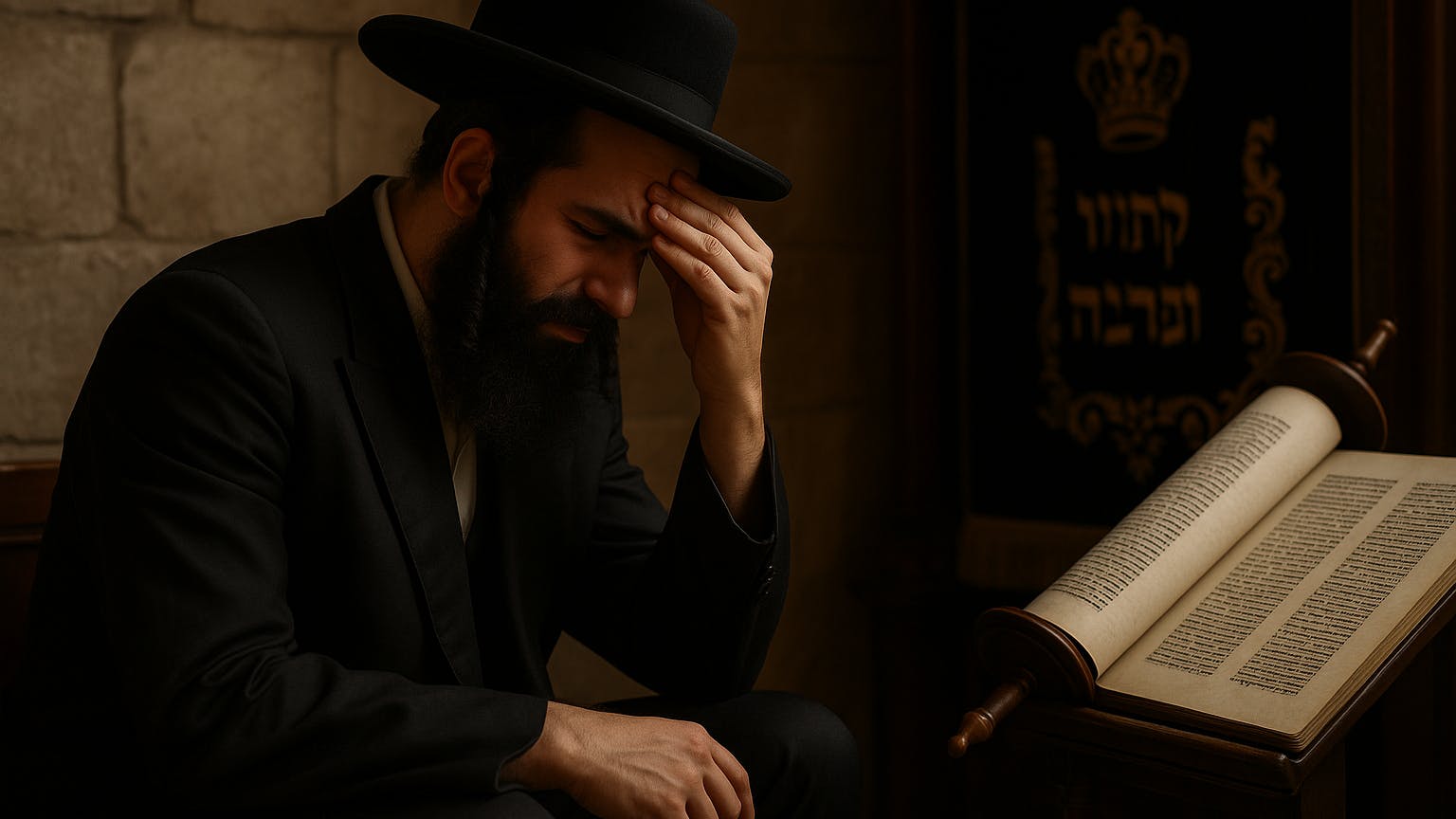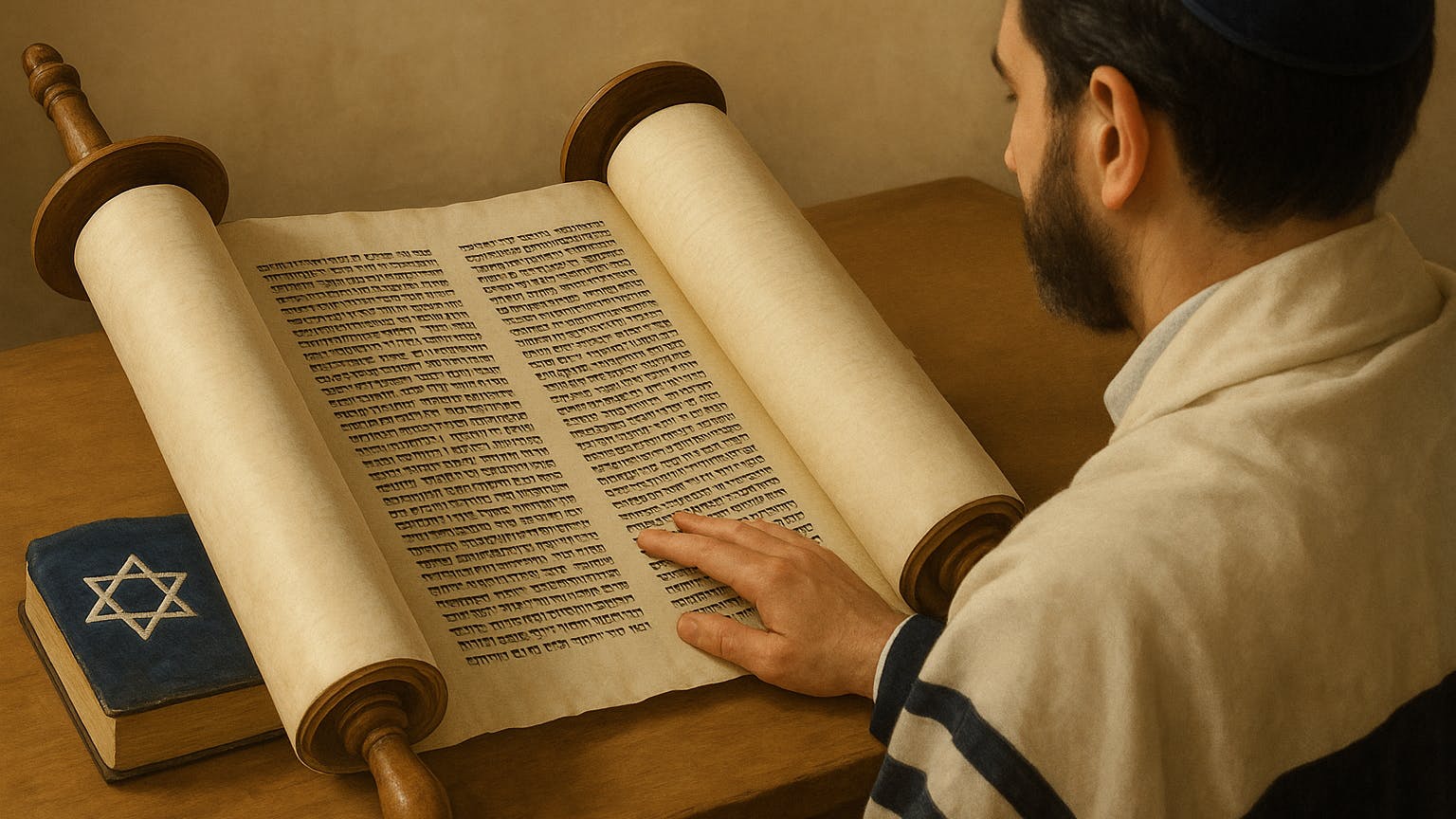This pattern becomes even more explicit in Genesis 1:26: “And God said, Let us make man in our image, after our likeness: and let them have dominion over the fish of the sea, and over the fowl of the air, and over the cattle, and over all the earth, and over every creeping thing that creepeth upon the earth.” The Hebrew נַֽעֲשֶׂ֥ה means "let us make," and בְּצַלְמֵ֖נוּ כִּדְמוּתֵ֑נוּ means "in our image, after our likeness." God is clearly speaking in plural terms. It is even more explicit than in verse 1 where the plural is implied by the yud and the mem soffit, which are typical for Hebrew masculine plurals.
The Challenge This Presents
The medieval Jewish commentator Rashi recognized the theological implications here. He noted that in this verse "there is an opportunity for the heretics to rebel," meaning they could use the grammar “to misconstrue the plural as a basis for their heresies.”
Rashi feared that if Elohim is not only a plural word, but God also speaks freely in the plural, this might seem to support ideas about multiple divine persons. He was concerned that Christians might gain legitimacy for the Trinitarian doctrine of three persons in one God. Indeed, this fear of legitimizing Christian theology is palpable throughout rabbinic commentaries upon the Old Testament. Traditional Jewish interpretation has generally understood these plurals as a royal "we," references to God's various attributes, or else God consulting with angels.
Yet there cannot be a call in Genesis 1:26 to the angels because the Tanakh always represents creation as the work of God alone, he did not take counsel from anyone else (Isaiah 40:14). The following verse shows that it was God alone who did the work. While there are plurals of majesty together with nouns in the Hebrew language, there are no certain examples of plurals of majesty with either verbs or pronouns.
Interpreting the “us” of Genesis 1:26 as God speaking to His attributes is incorrect because Hebrew grammar does not support using plural verbs for a single subject and its qualities. It is also contradicted by the immediate shift to the singular in Genesis 1:27. God’s attributes are never portrayed in Scripture as persons capable of dialogue which also suggests divisions within God’s being.
Meanwhile, mystical traditions such as the kabbalists have sometimes taken the plurality in different directions, looking for various emanations or channels within the divine that they seek to link together through secret knowledge. This type of thinking is not rooted in Scripture and it is not God’s will for us to perceive him in such a way. Instead we should examine what Scripture itself clearly reveals about God's nature.
What the Text Actually Shows Us
Setting aside speculation and attempts to explain away what is clearly stated, let's look at what the Tanakh actually tells us. The pattern of plurality within God's unity appears repeatedly throughout Scripture.
In Genesis 19:24, we read: הִמְטִ֧יר עַל־סְדֹ֛ם וְעַל־עֲמֹרָ֖ה גָּפְרִ֣ית וָאֵ֑שׁ מֵאֵ֥ת יְהוָ֖ה מִן־הַשָּׁמָֽיִם
Genesis 19:24
"Then the Lord rained upon Sodom and upon Gomorrah brimstone and fire from the Lord out of heaven."
Here, God is mentioned by his name ‘Jehovah’ twice: one Jehovah casting the fire and brimstone from the other Jehovah. Yet we also know that Jehovah is one God from Deuteronomy 6:4: שְׁמַ֖ע יִשְׂרָאֵ֑ל יְהוָ֥ה אֱלֹהֵ֖ינוּ יְהוָ֥ה ׀ אֶחָֽד: “Hear, O Israel: The Lord our God is one Lord.” Rashi tries to argue that both references of ‘Jehovah’ are to the same figure, by citing Lamech’s manner of speech in Genesis 4:23 “ ye wives of Lamech,” rather than “my wives”; yet the Scripture here in Genesis 19:26 is not reporting speech, but rather, showing the interaction between divine persons.
The interaction between divine persons becomes even clearer in Psalm 45:6-7: “Thy throne, O God, is for ever and ever: the sceptre of thy kingdom is a right sceptre. Thou lovest righteousness, and hatest wickedness: therefore God, thy God, hath anointed thee with the oil of gladness above thy fellows.” Here, the first אֱלֹהִים (Elohim) has an eternal throne and is anointed by the second Elohim. Since the first Elohim is clearly God himself (having an eternal being and power), the one who anoints this Elohim cannot be less than God himself!
The Father-Son Relationship
Scripture reveals that this distinction between divine persons includes a Father-Son relationship. Proverbs 30:4 asks
Proverbs 30:4
“Who hath ascended up into heaven, or descended? who hath gathered the wind in his fists? who hath bound the waters in a garment? who hath established all the ends of the earth? what is his name, and what is his son’s name, if thou canst tell?”
This passage clearly shows us that one Elohim is the Father of the other Elohim, yet together they remain one Elohim.
The power of this divine Son is also shown in Psalm 2, where we read that God the Father set his Son as king: “Yet have I set my king upon my holy hill of Zion” (verse 6), and that the Father has begotten the Son: “I will declare the decree: the Lord hath said unto me, Thou art my Son; this day have I begotten thee.” (verse 7). The nations of the world are instructed to worship this Son (verse 12): “Kiss the Son, lest he be angry, and ye perish from the way, when his wrath is kindled but a little. Blessed are all they that put their trust in him.”
More Details About the Son
Isaiah 9:6 gives us remarkable details about this Son: "For unto us a child is born, unto us a son is given: and the government shall be upon his shoulder: and his name shall be called Wonderful, Counselor, The mighty God, The everlasting Father, The Prince of Peace."
We learn specifically about his tribal identity and the location of his birth in Micah 5:2: “But thou, Bethlehem Ephratah, though thou be little among the thousands of Judah, yet out of thee shall he come forth unto me that is to be ruler in Israel; whose goings forth have been from of old, from everlasting.”
The Third Divine Person
Putting all this together, we see that there is one divine person of Elohim who is the Son to the other divine person of Elohim, yet not in a way that diminishes the absolute power of either. There's also evidence of a third divine person. In Isaiah 48:16, the Son speaks:
Isaiah 48:16
“Come ye near unto me, hear ye this; I have not spoken in secret from the beginning; from the time that it was, there am I: and now the Lord God, and his Spirit, hath sent me.”
Thus this Son was not only sent by the Father, but by the Spirit also.
Putting It All Together
When we examine all these passages together, a clear picture emerges. The Lord uses the name Elohim in the Tanakh not merely to indicate his power and authority, but also to reveal that there is a true plurality within God's unity. This is not a plurality of essence, but of persons. Scripture shows us not only that there is more than one divine person, but also reveals the relationships between them throughout the Hebrew Bible. There is a Father-Son relationship between two divine persons — Father and Son — Scripture also reveals to us the third divine person of the Holy Spirit. If you miss this, then the New Testament may seem foreign to you; yet this Trinitarian theology is within the pages of our own Tanakh.
The Fulfillment
The second person of the Trinity is Jesus Christ, fully God, who became incarnate as a Jewish man. He fulfilled the prophecies we've examined - born in Bethlehem, called Mighty God, the Son whom the nations must worship. He died for the sins of his people and was raised on the third day, now living in heaven as both God and man forever.
Conclusion
To truly know God, you must understand what it means for him to be Elohim, and understand all three divine persons of the one God: the Trinity in Unity, or the Trinunity. This isn't foreign theology imposed on Hebrew Scripture, but the natural reading of what the text itself reveals about the nature of the God of Abraham, Isaac, and Jacob.
The plurality in Elohim points us toward the profound truth that God exists as Trinity in Unity - three persons, one God, in perfect relationship from eternity.
More Topics
You might alsoo be interested in these topics.



